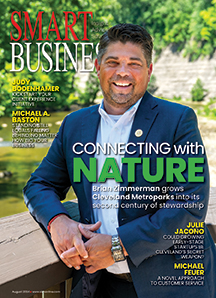
Armed with the knowledge of a financial analyst, Charles Chanaratsopon knows what makes a successful business and how to manage that success. In 2004, he took that knowledge and applied it to an advantageous investment market and founded Charming Charlie, a women’s boutique and accessories store.
“I saw an opportunity, not only in an operating store but also in the realty business,” says Chanaratsopon, founder and CEO. “The capital or investment market was very frothy. So you could quickly develop shopping centers on leverage and build quickly.”
Deciding to break into the market for women’s accessories, Chanaratsopon saw an opportunity for big growth with little competition, and his plan has worked. Since 2008, Charming Charlie has been opening new stores at a furious pace, and today, it is one of the fastest-growing private companies in the country.
“The operating business had a lot of demand,” Chanaratsopon says. “A lot of customers were coming in and buying product from us. We had lines outside every day before the stores opened. People just loved the product. I wanted to figure out a way to grow even faster.”
For the last six years, that’s exactly what he has gone out and accomplished. He knew that with the right mix of employees, strategy and innovation, Charming Charlie could be big.
“From the very beginning, when we had three stores, I always thought we had the potential to be all over the country,” he says. “People always talked about how I had big aspirations and thought I was crazy, when at three stores, I thought we could be all over the country. Now we are all over the country, and I think we could be all over the globe.”
Listen to the consumer
Chanaratsopon saw an opening in the market for women’s accessories, due to a lack of stores that strictly focused on accessory needs instead of clothing. Only large department stores offered those products to women.
“Once we saw what the market looked like, we knew we had an opportunity to create a specialty store around it,” Chanaratsopon says. “We saw it as an opportunity that we could exploit, so we did.”
As Charming Charlie took off in the Houston area, Chanaratsopon knew he could grow the business quickly if he continued to offer what customers were looking for and wanted to see in the store.
“That thesis worked out and held very well for the first two or three years,” Chanaratsopon says. “As we opened stores, stores were very busy and business picked up. We went out and built another center and then another center and went out and did it again and again. As we focused on listening to the customer and building our team out, that was basically the steps for our success.
“The key thing is, you need to listen to your customers before you break into a market,” he says. “You can’t really go until you do a market feasibility or market study about what they need. Does it make sense for Charming Charlie to come; do they like the concept? We always explore to see what opportunities are out there before we do a big push. We test the different markets to see if the concept will work. Our concept is very portable, so we are able to now move quickly through the different markets.”
It’s all about making sure there is a net demand for what you sell, before you go out and start something.
“I think that is just moral hazard,” he says. “Whatever you plan, plan on not meeting it. Have a worst-case, base-case and an upside-case plan, because most of the time, it’s very unpredictable in the beginning. You have to mitigate the downside and make sure that you have contingency plans if things don’t go well in the beginning, because capital will be a constraint.
“In our first year or two as we solidified our playbook, we had a lot of key takeaways in ‘learnings’ and mistakes. So before we could go out and do a cookie-cutter approach, it took us a few years to make sure we had the right recipe for success.”
Everything starts and ends with the customer.
“My best advice is to go out and learn the customers, and make sure there is a need before you go out and build anything,” he says. “You survey your current customers and your noncustomers, and you ask them questions about what you can do better to improve. At the end of the day, our boss is the ultimate shopper. We just listen — that’s what we do. I don’t mean to make it sound so simple, but it is. We listen to what they need, and we do it, often. We spend a lot of money listening to their needs, and we try to give them what they want.
“We are not a tech company or a research group. We sell on experience and what we do is listen to our customer and make sure we deliver the best that we can, and that’s our mantra.”

